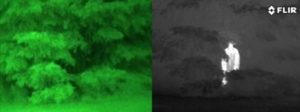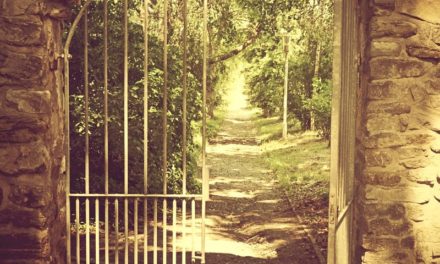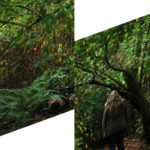![]() Scientists readily accept the depth and complexity of the natural world and are open to explore her treasures and mysteries with a variety of instruments and approaches. But what about students of the Bible? Do not both nature and revelation have the same Master Mind as their source?
Scientists readily accept the depth and complexity of the natural world and are open to explore her treasures and mysteries with a variety of instruments and approaches. But what about students of the Bible? Do not both nature and revelation have the same Master Mind as their source?
“Since the book of nature and the book of revelation bear the impress of the same master mind, they cannot but speak in harmony. By different methods, and in different languages, they witness to the same great truths. {Ed 128}
But we must approach both with a spirit of meekness.
The meek will he guide in judgment: and the meek will he teach his way. Psa 25:9
The meek are those who do not depend wholly on their personal gifts and powers, but submit them to their Benefactor, and are willing to use other methods and timings as He may choose.
Imagine walking along a mountain trail and a sound ahead grabs your attention. You stop and study the area carefully, but can’t see anything unusual. So, you get out your binoculars and train it at the area you suspect might reveal the source of the sound. The picture below is what you see. Does anything look suspicious? 
Someone else comes alongside and asks what you are looking at. You tell him you heard a sound up ahead and was curious what it was, but couldn’t see anything. You give him your binoculars and point out the area in question. He looks and shakes his head in agreement. “Nope,” he says. “Can’t see anything unusual.” Then he takes out his own binoculars and looks. “Interesting. Yes, very interesting,” he says, as he hands you his field glasses. He explains, “These are night time ones. They look at things differently, in infrared. They see things by heat, not light. You won’t see much through them, but what you see may surprise you.” And so you look, and gasp! [I’ll show you what he saw a little later.]
We may experience the same thing when enjoying time in God’s Word. Something causes us to pause and look carefully, but our conventional “field glasses” reveal nothing more. Perhaps a different perspective might help. We will look at one example—the use of a single number.
PILLARS
We are reading Exodus 26 and 27, studying the three doors used in the sanctuary, and something grabs our attention. Two of the doors, the first and last, use four pillars. But the middle one, the one into the Holy Place, uses five. It doesn’t make sense, because the inner vail is just as wide and high and it needs only four pillars for support. And the five second door pillars have brass sockets, just like the first door pillars, yet the door into the courtyard, though twice as wide, still uses just four pillars. So why five at the entrance into the tabernacle?
We go back and read Exodus 26 over again and again, and see nothing that could give us a clue… unless it is in the number itself. God uses numbers like we use words. In fact, they are able to say a lot, as we shall soon see.
So we do a search for the number “five” and come to a familiar story Jesus told. I’m sure you remember it. It’s the one about a rich man and a beggar named Lazarus. You can read it in Luke 16:19-31. There’s a lot going on in the story, and it’s very likely you didn’t pause very long at the clue. It’s found in verse 28. The rich man, after finding that his cause was hopeless, asked Father Abraham to send Lazarus to his brothers, to warn them of this place of torment he was in. He had five brothers. Abraham said, “They have Moses and the prophets; let them hear them.” The rich man persisted, thinking they would listen if someone rose from the dead. Abraham disagreed, and thus ends the story. So, what did you glean from the parable to help you understand why Jesus gave the number of brothers the rich man had? It’s in there! Just like the something hiding in the bushes.
GOSHEN
This time we narrow our search to “five” and “brethren.” And it takes us to a singular scripture in Genesis 47. It’s another story God chose to include in His anthology of historical events, personal experiences, poems, prophecies, and parables, because it will help us understand an important facet of that number. In this story Joseph’s family moved down to Egypt at his request, for they were only two years into the famine. When they came they brought also their livelihood, their flocks and herds. But they needed a place to pasture their animals. So Joseph did two things. He told Pharaoh about his family coming, with their herds, and temporarily camped in Goshen. Also he took some of his brethern (“even five,” the Word adds in verse 2) to meet Pharaoh. The ruler asks them their occupation and they tell him they and their fathers are shepherds and need pasture for their animals. Then they specifically request the land of Goshen. (Note Joseph did not make this request. The only thing he told Pharaoh was that that was where they were temporarily camped.) These “five brethren” spoke for the whole tribe of Jacob with his twelve sons. And the granting of their request was not for the five alone, but the whole tribe. In short, they represented the chosen of God! And God used them to bless the whole twelve tribes.
Now, let’s return to Jesus’ story. Nowhere in the story does Jesus say directly that the rich man was a Jew. This is only implied by the fact that he knew who Father Abraham was, and Abraham knew his “five brethren” were familiar with “Moses and the prophets” and had access to their writings. In both accounts, the five represented the chosen of God, whether they were innocent or guilty of rebellion. Jesus let them know they had not been rejected yet!
BREAD AND FISH
We continue our search on the number and find another tidbit in Mark 8. Remember, after feeding the 4,000, the disciples realized they had brought with them only one loaf. As they discussed this among themselves Jesus admonished them to beware of the leaven of the Pharisees and Herod. The 12 men couldn’t understand their Teacher. What did that have to do with their forgetting to bring bread with them? This really concerned Jesus. He said,
“Why reason ye, because ye have no bread? perceive ye not yet, neither understand? have ye your heart yet hardened? Having eyes, see ye not? and having ears, hear ye not? and do ye not remember? ” (verse17-18).
He then prodded them to recall the two events (feeding the 5,000 and the 4,000). He asked them how many basketsful were left from each, and they answered correctly. But they still didn’t understand. And, again, this greatly troubled Jesus. Five loaves and 12 baskets? Hello? Weren’t the 5,000 all Jews? Did not 12 also identify them as God’s chosen? Wasn’t this near Bethsaida, a Jewish community? Philip, Andrew, and Peter were residents of that city (John 1:44). And in spite of all the miracles done there the “elect” still rejected Him (because of the leavening effect of the Pharisees and Herod). The 4,000 were fed from 7 loaves and had 7 basketsful (tokens of divine favor), and were Gentiles and heathen. During that recent event His disciples were expressing some of the leaven of the Pharisees.
“Moreover, those whom He fed at Bethsaida were Jews; these [the 4,000] were Gentiles and heathen. Jewish prejudice was still strong in the hearts of the disciples, and they answered Jesus, ‘Whence can a man satisfy these men with bread here in the wilderness?’ But obedient to His word they brought Him what they had,—seven loaves and two fishes. The multitude were fed, seven large baskets of fragments remaining. Four thousand men, besides women and children, were thus refreshed, and Jesus sent them away with glad and grateful hearts.” {DA 404}
CREATION
Our search brings us to yet another way God uses the number five. It’s in the Creation story – day five (Genesis 1:20-22). What was this day unique for? “Oh, that’s when God made the fish and fowl,” some proudly say. They’ve read their Bibles! And they are right. But let’s look at a couple verses again, keeping in mind that this isn’t the first day that living forms were made. A new dimension of life was created.
Gen 1:20 And God said, Let the waters bring forth abundantly the moving creature that hath life, and fowl that may fly above the earth in the open firmament of heaven.
Gen 1:21 And God created great whales, and every living creature that moveth, which the waters brought forth abundantly, after their kind, and every winged fowl after his kind: and God saw that it was good.
You notice anything special about this form of life that would be different from Day 3? The “moving creature” in verse 20 and “every living creature that moveth” in the next verse are not the same word. Moses was trying to emphasize something. The first one (sherets, Strong number H8318) means swarm, creeping, and active mass of small animals, and from a word that means “wiggle.” The second use in verse 21 (ramas, H7430) speaks about gliding swiftly, or crawling, moving with short steps, or swarming. And then winged fowl adds the capacity of flight. So as we look at all these new ways of expressing life by all the different kinds of movement, it becomes obvious that Day 5 is adding the capacity of volition to life, the ability to move freely at will—something the plants didn’t have.
So now we have 5 representing the chosen of God, and those who still have the capacity of free choice, to move about as they wish (thank God for the gift of His Son who redeemed us from our captor!). But we are not through yet. As we learn of other characteristics of the number we will see a harmony and symbiosis of them all, painting a glorious picture, as only God could.
COMMANDMENTS
The fifth commandment enjoins us to honor our parents. Is the free exercise of the will involved? Is this something that is required of all of God’s chosen people? But this commandment adds more dimension to the number (honoring parents,and a long life in the Land of Promise). Notice, nothing contradicts or diminishes another, but rather adds to the total picture.
Numbers are used as word pictures just as much as are objects (rocks, fire, water, lambs, swords). The Bible encourages us to not be content with a singular approach in our evaluations. (Deut. 19:15 “at the mouth of two witnesses, or at the mouth of three witnesses, shall the matter be established.”) Numbers add detail otherwise hidden from descriptions, just like the two binoculars did earlier in this article. Those who put total confidence in the common type of binoculars would totally miss what the infrared binoculars easily captured. See for yourself. By comparing the leaf patterns in both views you can see where the man is standing in the left picture.

Numbers are used to either hide important information from careless or conniving eyes, or to efficiently add significant detail to important subjects, like the Covenant or Sanctuary. So let’s go back to the Sanctuary, where we started, at the five pillars, where we asked, Why five?
BODY TEMPLE
First of all, whatever the pillars represent, we can assume now it could be something that would characterize the chosen of God, would have something to do with a long life in the Promised Land, and something to do with the exercise of the will, as well as something that would help us honor our heavenly and earthly parents (or guardians). This actually is a good start, for pillars can stand as guardians at the entrance to the Tabernacle. And we know that the Tabernacle is not only a figure of the one in heaven but also of our own body (John 2:19-21)
What? know ye not that your body is the temple of the Holy Ghost which is in you, which ye have of God, and ye are not your own? (1Cor 6:19)
“The Holy Spirit must be honored in the temple of the soul, where he delights to dwell. “ {RH, October 9, 1900 par. 10}
As with the heavenly temple, the soul temple must also be cleansed from the pollution of sin.
“O, that the temple of the soul might be cleansed, and become the habitation of the Spirit!” {ST, September 19, 1895 par. 5}
There is something else about these pillars, some detail God was pleased to record for us, that helps us better understand His purpose for them. Unlike the pillars in the courtyard, these pillars had an organic center. They were crafted out of shittim wood, overlaid with gold, as all the other Tabernacle structures were and most of the Sanctuary furniture. This suggests that these pillars have something to do with life, something organic. Another piece of information was that these five pillars (unlike the four others inside) had a brass base. Their sockets were bronze, like all the courtyard pillars. Bronze, or brass, is not a natural element. It needs to be put together by man. This close association with humanity made it a perfect metal to be used in the courtyard, which represented everything done ON THIS EARTH. So having those five pillars with wooden cores and supported by brass sockets highly suggests something pillar-like, yet very human, standing guard at the entrance to our body temples, something that will help preserve our freedom of choice, something characteristic of the chosen of God, and something that will help us give honor to our earthly and heavenly parents, as well as promise us a long life in our promised Home.
It is exactly at this point that I believe Mrs. White’s insight can be applied.
“All should guard the senses, lest Satan gain victory over them; for these are the avenues to the soul.” 3T 507
Then she adds elsewhere,
“The brain nerves which communicate to the entire system are the only medium through which Heaven can communicate to man, and affect his inmost life.” 2T 347
SUMMARY
So now we have the information we need to understand “why five?” Those five pillars can represent guardians of the soul to those entering the tabernacle.
Anything we bring into the soul temple must harmonize with the free exercise of the will, with a faithful use of all our five senses, must bring honor to our parents (or heavenly Father), must support principles pertinent to all of God’s family, and needs to be appropriate to life in the Promised Land. If any of these pillars of a sanctified life are ignored or despised by someone else’s gospel, we will know they are not for us. To those who persist in promoting such things, the sanctuary will become their downfall instead of their rock of defense and blessing because they will distort what God has intended to bless, heal, and transform.
God uses numbers a lot in His Word as well as in creation. In our study of the Sanctuary we will see several numbers used, numbers identified with the Covenant made with Abraham and transferred to his promised seed. The book of Revelation picks up these numbers and applies them to current issues in our day. If we don’t familiarize ourselves with them we may miss important information hiding in the trees.
In Part 2 we will look at the numbers used in the Covenant and the Most Holy Place, and see how they harmonize to give us a beautiful picture of the 144,000 in Revelation.






